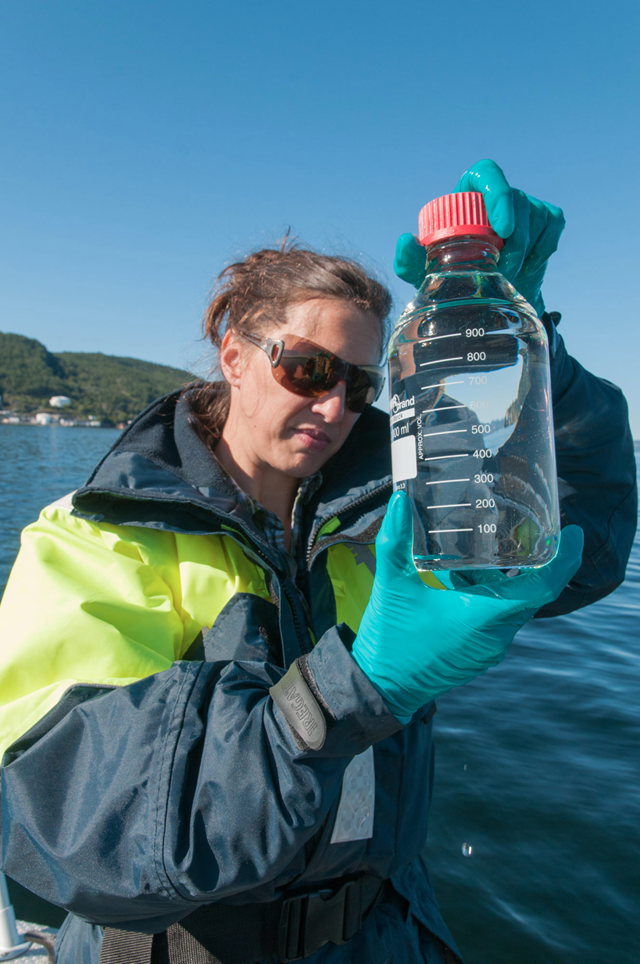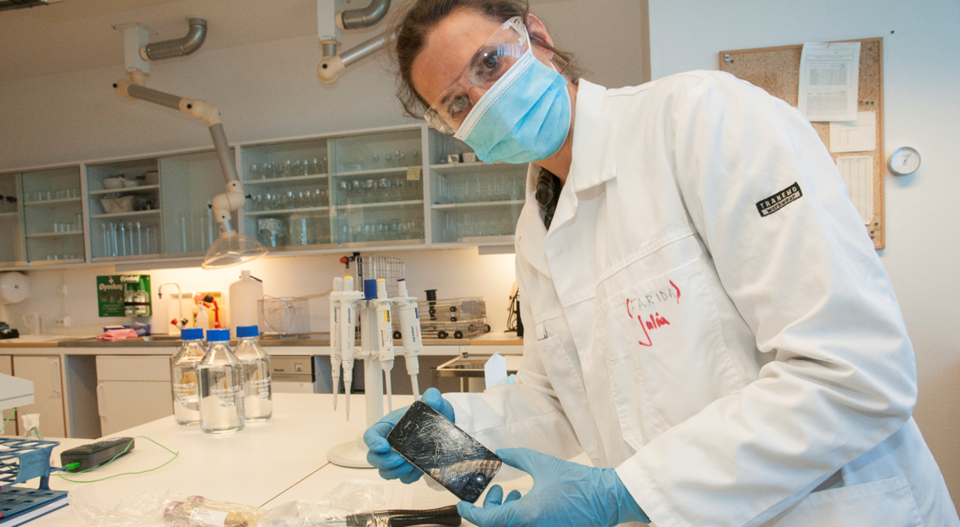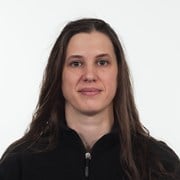The rare earth elements (REEs) are also referred to as the ‘black gold’ of the 21st century. They constitute key metals utilised in high-tech technologies and are crucial if we are to achieve a greener and more efficient industrial sector and implement the green transition.
Medicines, electric vehicles, mobile phones, wind turbines, fuel additives and fertilisers, as well as other high-tech industries, all make use of REEs such as scandium and gadolinium. But can their use also be harmful to life in our fjords and oceans, our environment and the food we eat? Does the way we use REEs make it inevitable that they will end up in the sea?
What do we discard from our cities?
These are the questions that researchers at SINTEF Ocean will be addressing during the coming years. Their project is called ELEMENTARY and has been granted NOK 11 million in funding from the Research Council of Norway.
“We know that when REEs are used as additives they undergo processing that may make them behave differently in nature after they are discharged than they do in their natural mineral state”, says Project Manager and SINTEF Research Scientist Julia Farkas. “However, at present, we know too little about REE concentrations in Norwegian waters and the potential impact they may have on marine species. That’s why it’s important to find out more”, she says.
Together with researchers from Denmark and Germany, the SINTEF scientists will be looking into the REEs concentrations in different fjords and other areas.

A boat trip on the fjord provides Julia Farkas with exactly what she’s looking for – crystal clear seawater from the fjord close to the centre of Trondheim in Norway. Later in the project, water samples will be taken for testing from a number of other locations. Photo: Anne-Lise Aakervik.
Hot spots
“We’ve selected some so-called coastal ‘hot spots’ where we’re measuring REE concentrations close to possible discharge sources”, says Farkas. “The area outside the city of Trondheim is such a hot spot. The project was launched in the summer, and we sampled water, sediments and many different organisms on our first scientific cruise close to Trondheim this autumn. We will analyse the samples and look for deviations from natural background REE concentrations and patterns, that indicate discharges related to anthropogenic REE use”, she says.
Close to Trondheim, the researchers are on the lookout in particular for the element gadolinium, which is used in medical contrast agents. When used in such agents, gadolinium is coated in other molecules that keeps the agent stable and minimises side-effects. What we don’t know is what happens to the discharged gadolinium-complexes when it is discharged into the sea. Does it change its behaviour? Does it dissolve and disperse in the marine environment? Does it accumulate in fish tissues?
FACTS about REEs and the project ELEMENTARY
The Rare Earth Elements (REEs) is a collective term for up to 17 different elements, and is sometimes also used to describe the minerals in which they occur in their natural state. REEs are used in the manufacture of cars and a number of other consumer products such as mobile telephones. China is responsible for most of the world’s production of several of the REEs. There are also major deposits of these minerals in Norway.
The researchers’ aim in this project is to study the concentrations of anthropogenically-released REEs in coastal environments at four different sites, and their accumulation in susceptible organisms. The project will also investigate a number of indicator and commercially important fish species in order to study the possible impacts of REEs.
The project partners are: SINTEF Ocean (Project Coordinator) The Norwegian University of Science and Technology (NTNU), Trondheim, Norway Nord University, Bodø, Norway Jacobs University, Bremen, Germany Århus University, Denmark
Lab tests of mobile phones
While waiting for the analyses of the huge numbers of water, sediment and organism samples, such as seaweed, mussels and fish, Julia Farkas has begun a separate little study looking into release of REEs from mobile phones. Do we really know anything about whether discarded mobile phones leak substances while submerged in water? And do they leak more if they are in pieces, or intact?
Between 1.5 and 2 million mobile phones are sold in Norway every year, and 15 billion globally.
In the lab, Farkas has set up four jars containing seawater taken from the fjord. Beside them lies a pile of discarded mobile phones, some of which have been smashed deliberately.
“The minerals we’re looking for are in the screens”, explains Farkas. She is very grateful to her colleagues, friends and even her father for providing her with phones that they no longer use. “We’re testing identical models and placing each in its own jar – first for a week, then for a month and then for two months”, she says. “Then we’ll analyse the water to see if anything has leaked out. The results will tell us whether the phones release large or small amounts of REEs, or none at all, and will give us a general idea.
These are the Rare Earth Elements:
21 Scandium from Scandia, the Latin name for Scandinavia
39 Yttrium after the Ytterby mine in Sweden
57 Lanthanum from the Greek ‘lanthanon’, meaning ‘I am hidden’
58 Cerium after Ceres, the Roman Goddess of Fertility
59 Praseodymium from the Greek ‘praso’, and meaning ‘leek green twin’
60 Neodymium from the Greek ‘neos’, and meaning ‘new twin’
61 Promethium from Prometheus who gave fire to humans
62 Samarium after Vasilij Samarskij-Bykhovets, who discovered the mineral samarskite
63 Europium isolated by Demarcay who named the element after Europe
64 Gadolinium after Johan Gadolin (1760-1852), who studied the REEs
65 Terbium after the Ytterby mine in Sweden
66 Dysprosium from the Greek ‘dusprositos’, meaning ‘hard to get at”
67 Holmium from Holmia, the Latin name for Stockholm
68 Erbium after the Ytterby mine in Sweden
69 Thulium after the mystical land of Thule
70 Ytterbium after the Ytterby mine in Sweden
71 Lutetium from Lutetia, the Roman’s name for Paris
Source: Wikipedia.
Coastal environments under threat
“The fact is that we simply don’t know whether waste from a variety of devices is being released into the sea in Norway”, says Farkas. “That’s why we don’t know anything about the possible impacts that such waste may have on marine organisms”, she says.
Coastal waters are key environments locally and globally for both marine life and humans. They are exploited by humans in the fisheries, energy and other resource sectors, and are used for recreation.
For example, in Norway, several fjords are key sites for biological diversity, while at the same time being locations for salmon farms and world-renowned tourist destinations. And it’s precisely because the fjords are so important, both in terms of ecology and the economy, that it’s important for us to know what we should and should not be releasing into these waters.
A vulnerable coastal ecosystem
The analyses of marine organisms collected from these areas will help us to find out whether REEs are taken up into organisms, and which groups of organisms are most likely to accumulate REEs.
We will conduct controlled laboratory experiments to study the factors that influence the take up of REEs by fish species and their responses to the various substances. In combination with environmental assessments, these experiments will provide data on the potential risks linked to the release of REEs into Norwegian coastal ecosystems.
As the population and technologisation increases, we can only suppose that our use of these elements will not be any less in the future. For this reason, it is a good idea to be aware of where these substances end up once the devices that contain them become old and outdated, and are discarded or recycled.
In the next phase of the project, the researchers will survey sea areas located offshore of intensely fertilised agricultural areas to see if they can find any traces of REEs there.


